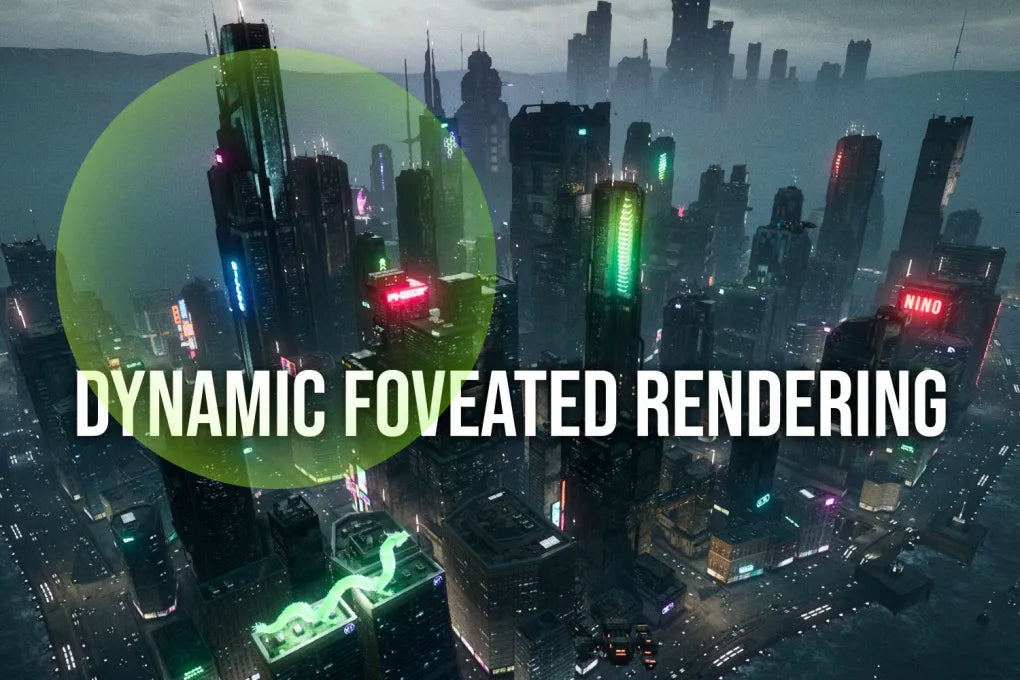Virtual Reality (VR) technology has come a long way, and one of the latest breakthroughs revolutionizing the visual experience is Dynamic Foveated Rendering. This cutting-edge rendering technique is set to redefine how we perceive and interact with virtual environments in the world of VR. In this post, we’ll delve into what Dynamic Foveated Rendering is and how it’s poised to elevate the graphics quality and performance in VR headsets.
Understanding Dynamic Foveated Rendering
Foveated rendering is a technique that mimics the human eye’s natural focus, directing the highest level of detail to the user’s central field of vision, known as the fovea, while reducing detail in peripheral areas. What makes Dynamic Foveated Rendering unique is its ability to adapt in real-time based on the user’s gaze and movement within the virtual space.
How It Works
Dynamic Foveated Rendering utilizes eye-tracking technology integrated into VR headsets. By constantly monitoring the user’s gaze, the system dynamically adjusts the level of detail rendered in different parts of the virtual scene. The central area, where the user is looking, receives the highest level of detail, while the peripheral areas are rendered at lower resolutions. This intelligent optimization not only enhances visual quality where it matters most but also significantly improves overall performance by reducing the computational load.
Key Benefits:
1: Improved Performance: By focusing rendering resources on the user’s central field of vision, Dynamic Foveated Rendering allows for more efficient use of GPU power. This results in smoother frame rates and a reduction in the overall processing demands on the VR system.
2: Enhanced Visual Fidelity: The central area of focus receives the maximum level of detail, providing users with a heightened sense of realism and immersion. This leads to sharper images and more vibrant colors where it matters most.
3: Reduced Motion Sickness: Higher frame rates and improved performance contribute to a more comfortable VR experience, minimizing the risk of motion sickness that can be associated with lower frame rates and lag.
4: Extended Battery Life for Standalone VR Devices: For standalone VR devices with limited battery capacity, Dynamic Foveated Rendering can contribute to extending battery life by optimizing resource usage.
DFR in the Pimax Crystal
The Pimax Crystal uses eye-tracking powered by Tobii, and has DFR compatability with loads of games, including iRacing, Microsoft Flight Simulator 2020, DCS, Skyrim, and many many more. DFR can increase your FPS by 10 to 50%. This means you can even run DCS on a 2060 GPU.
See here for an in-depth dive
See here for Dynamic Foveated Rendering (DFR) in Skyrim:
Conclusion
Dynamic Foveated Rendering represents a significant leap forward in VR graphics optimization. As eye-tracking technology becomes more prevalent in VR headsets, we can expect this technique to become a standard feature, enhancing both visual quality and overall performance. The future of VR is bright, and Dynamic Foveated Rendering is at the forefront of shaping the next generation of immersive virtual experiences. Strap on your headset and get ready for a visual journey like never before!







